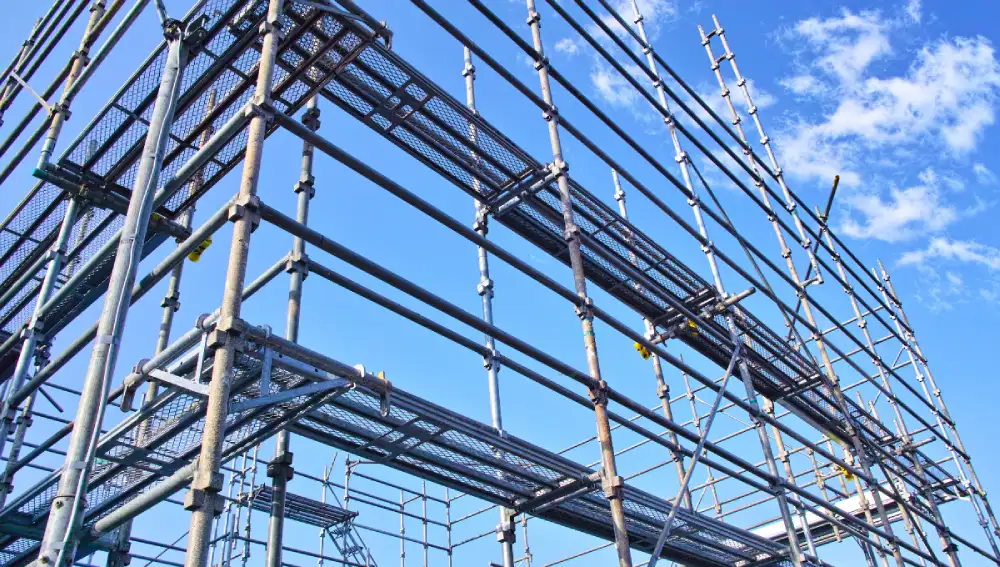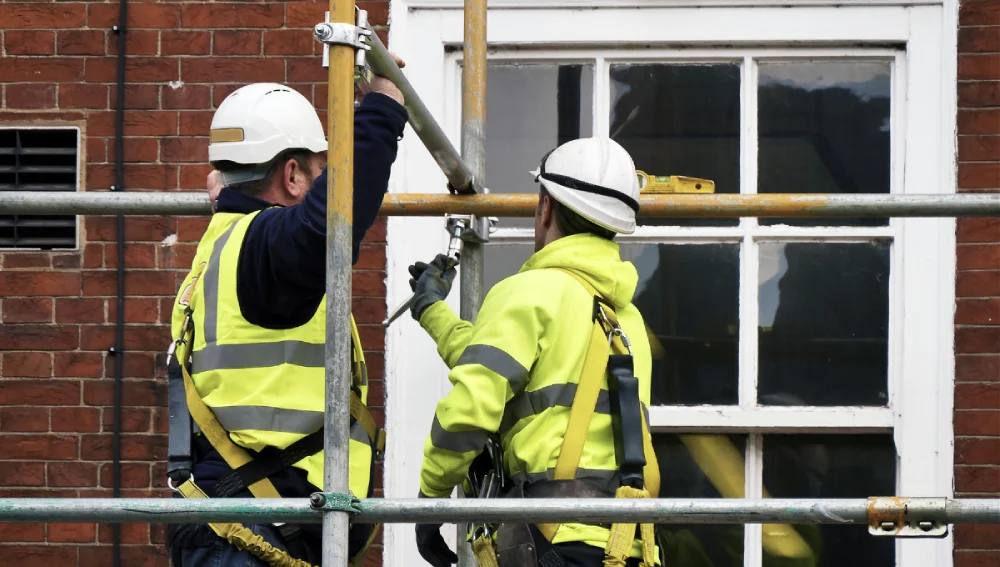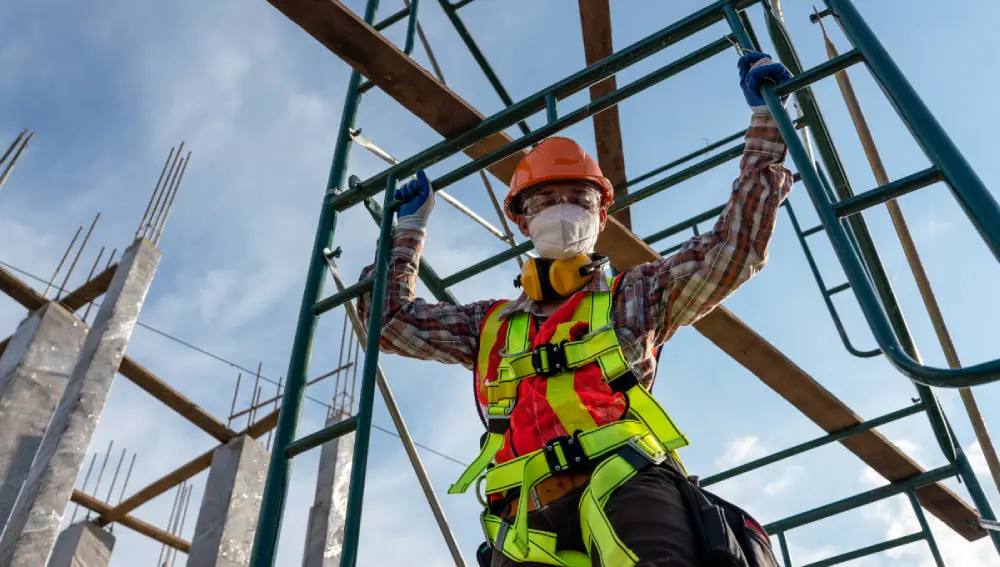Scaffolding is a framework or temporarily raised structure to support workers to construct or repair in hard-to-reach places. It may be buildings, bridges or any other complex construction area, this is the method that has been followed since the first structure. A properly built scaffolding is safe to access and holds the weight of workers and their equipment.
It ensures the safety, convenience and efficiency of construction work. People often get confused with Centering and scaffolding Even though scaffolding is widely categorized, new variants come often. Some of the most common and popular types of scaffolding used in construction industries are listed in this article.

Types of Scaffolding in Construction
Scaffolding is paramount to constructing any building structure. Based on the specific needs of the project, the types may differ. Each has unique qualities and benefits; you can choose the wise option.
Single Scaffolding
Single scaffolding also known as bricklayer scaffolding stands parallel to the wall with vertical supports. The ledgers and horizontal support joined to the standards at a vertical angle. Putlogs are nothing but holes connected for support to the building or structure. In the earlier days, this method was carried out with bamboo or timber. Later, they used steel pipe as standard and have not been used in the construction industry often.
Double Scaffolding
Double scaffolding is popularly known for stone masonry works, often called mason’s scaffolding. It provides stronger support to the construction work compared to single scaffolding. However, creating holes for putlog anchoring is quite challenging. The first row of this scaffolding sits parallel to the wall while the second sits away from the first. Cross and rakers act as additional support to the entire structure.
Suspended Scaffolding
Suspended scaffolding is best suited for window cleaners, painters and repair positions. In general, people who work on top heights can make use of this type. Chains and wires suspend this type of scaffolding, instead, the lever or electric system is used to adjust the platform as needed.
Steel Scaffolding
Steel scaffolding is quite easy to construct and dismantle and requires very little effort. It supports adheres together with couples, extremely durable, sturdier and fire-resistant comparatively than other types of scaffolding.
System Scaffolding
It is often referred to as modular scaffolding primarily includes horizontal and vertical pre-engineered components connected together in a systematic way. This is specifically efficient and more likely to be used in most of the construction areas across the globe. System scaffolding is categorized into various types, some may withstand heavy load conditions and some for smaller scaffold structures. The types include:
- Cuploack systems scaffolding
- Kwikstage scaffolding
- Haki scaffolding
- Staircase towers
Wooden and Bamboo Scaffolding
These are the most commonly used scaffolding found in many structures across the world. It is notable for its eco-responsible and flexible nature. Professional technicians and designers construct this structure through layers and make it safe for workers and their equipment.
Swing Set or Suspended Scaffolding
Although this structure is not being built from the ground, still plays a crucial in the scaffolding type. It is primarily used to give support to the scaffolders and their supplies. The swing set contains a platform that is suspended by a cable system, it can climb up and down to the required heights. It will be a cost-saving method while working on very tall structures like building maintenance and improvements.
Patented Scaffolding
Patented scaffolding is integrated with special couplings to offer exceptional support together. It benefits more from a steel composition containing height-adjustable brackets according to the working nature of employees.
Scaffolding Safety Tips

Safety tips for workers are a primary concern. We can witness a huge range of injuries and accidents because of carelessness. So, these are the significant safety tips essential to follow:
Need Proper Equipment
PPE (Personal Protective Equipment) is essential, especially when working in construction areas at height. Workers need to wear a hard hat on scaffolds to avoid injuries from falling objects. Incorporating non-slip footgear, tool-tether lanyards and hand-protecting gloves to improve working-at-height safety.
Being Aware of Load Limits
Manufacturers are required to be aware of the load limits when designing and constructing any type of scaffolding. Unfortunately, it may break, collapse or fail which would cause severe injuries to the workers on or near the scaffolding. So, it is always good to integrate capacity safety cushions to avoid placing excessive load limits.
Train the Employees
Working at top height is not an easy practice, employees need proper training to recognize, use and control the scaffolding. They should be given with essential knowledge regarding materials and handling to reduce hazards.
Proper Manufacturing
Follow the manufacturer’s instructions when involved in the manufacturing process of the scaffold. Here are some of the common safety checklists:
- Guardrails are super secure; the top rails are placed above the platform at 38-45 inches.
- Footings provide good support to the loaded scaffold, which should be on level or solid-ground
- Platforms should be decked and fully planked with proper toeboards, guardrails, and midrails.
Conclusion
This article explains to you the type of scaffolding that plays a major role in the construction industry, you can choose the wise option as per your requirements. However, it is paramount to ensure that essential safety precautions are enabled to avoid causing any unfortunate accidents and injuries.
FAQs
Scaffolding provides a safe and stable platform for workers to perform tasks at height and facilitates efficient work.
Steel scaffolding is a suitable option for heavy duty construction projects due to its extended fire resistance, strength and durability. Compared to other scaffolding types, it is pretty easy to construct and dismantle.
Suspended scaffolding is ideal for handling tall building construction or repair work, it can be adjusted to various heights suitable for workers.

